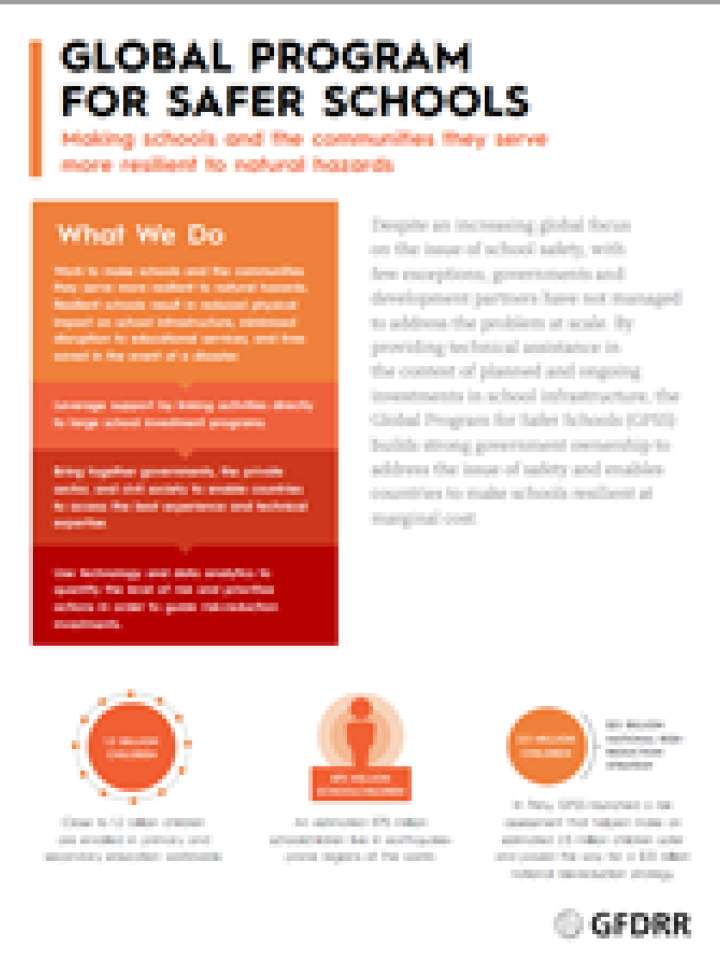Global program for safer schools: Making schools and the communities they serve more resilient to natural hazards
Despite an increasing global focus on the issue of school safety, with few exceptions, governments and development partners have not managed to address the problem at scale. By providing technical assistance in the context of planned and ongoing investments in school infrastructure, the Global Program for Safer Schools (GPSS) builds strong government ownership to address the issue of safety and enables countries to make schools resilient at marginal cost.
This document presents case studies from Peru, Nepal and Armenia. It also describes the following opportunities to make schools more resilient to natural hazards:
- GPSS aims to engage in 20 additional countries in the next five years in order to reach its goal of making 500,000 classrooms safe from natural disasters and to benefit 15 million students;
- ARUP (a private firm of designers, planners, and engineers) is supporting GPSS to develop the Recovery and Reconstruction Roadmap, an operational tool that will guide project managers involved in post-disaster recovery and reconstruction efforts;
- University College London is supporting GPSS to develop a global baseline of risk information that will inform school infrastructure projects in countries that lack information and capacity to make risk-informed decisions.
Explore further
